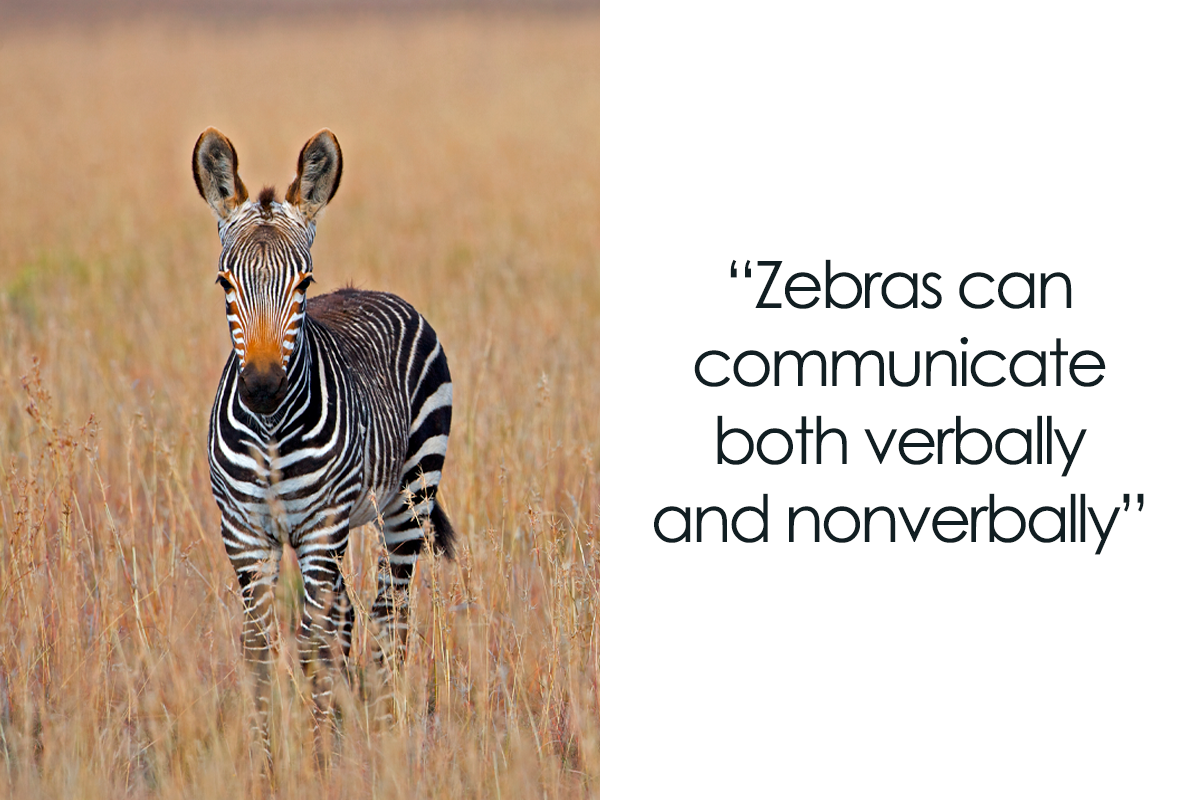No place is like Africa. Italians and the French use the expression “Mal d’Africa” or “Mal d’Afrique” (literally, “Africa’s disease”) to describe the intense nostalgic feeling experienced by those who visited Africa and fell in love with it so much they want to go back as soon as possible. And how could you not?
It’s the cradle of humanity, the birthplace of unique forms of art, music, and inventions, and a land where nature and wildlife still rule supreme. And few animals are as representative of this continent as zebras!
If you’ve ever been lucky enough to see these black-and-white striped equines with your own eyes, you’ll know that zebras are truly a sight to behold. Unlike horses, they’ve never been domesticated, but this doesn’t mean we cannot admire their majestic and graceful nature. Sanctuaries are the perfect place to get a glimpse of these striped animals in a protected habitat.
Meanwhile, why don’t we explore some of the most fascinating zebra facts you might not know? For such an iconic African animal, there are still many facts about zebras that most people don’t know! For example, did you know that a zebra’s stripes are unique, just like human fingerprints? Or that zebras can sleep standing up? Prepare to be amazed, because today we’re off to Africa to learn more about one of nature’s coolest-looking creatures!
This post may include affiliate links.
Ethologists have observed that mountain zebras pay close attention to other animals’ behavior and communication. An example? They act in response to the black wildebeest’s alarm signals that warn of a predator’s presence or another potential risk. However, they rarely react to the alarm signals of smaller antelopes.
If you have ever wondered if horse-zebra hybrids exist, the answer is yes. They’re called zorses, and they’re the offspring of a zebra stallion and a horse mare. This hybrid has been mentioned several times in George R.R. Martin’s A Song of Ice and Fire series of fantasy novels. Like most hybrids, zorses are sterile.
Zebras have a strong sense of community and are not afraid to stand up for their herd companions. When one of them gets wounded by a predator’s attack, other zebras immediately come to their rescue by circling the injured companion and assisting in the attempt to drive away the attacker.
All zebras are native to Africa, but depending on their species, they have their own peculiar habitat. Plains zebras can be found in eastern and southern Africa; Grevy’s zebras live in Ethiopia and Kenya; mountain zebras are instead commonly found in South Africa, Namibia, and Angola.
Hartmann’s mountain zebras, which range from South West Africa to Angola, are known for their playful nature. They have a preference for certain games, including chasing each other, racing, and play-fighting. They commonly engage in nose-to-nose contact followed by mutual grooming.
Zebras can communicate both verbally and nonverbally. The most notable example of non-verbal communication is through facial expression, their ears in particular. When greeting each other, they stick their ears up and push their faces forward. When feeling threatened, they press their ears against their heads.
Verbally means "with words", so I sort of doubt it. Vocally, sure.
Alongside horses and donkeys, zebras are the only living group of animals with just one toe.
Fossils from China and Uzbekistan, as well as a two-million-year-old fossil found in South Africa, provide evidence that ancestral forms of Grevy’s zebras once roamed Africa and Eurasia.
Albino zebras exist: they’ve been spotted in the forests of Mount Kenya, and their dark stripes are blonde.
Zebras have a habit of rubbing against various objects and even rolling in the dirt. The rolling action covers their coat with sand and soil, which helps zebras keep themselves clean, rubbing off dead skin and getting rid of ticks, biting insects, and pests. Zebras also help keep each other clean.
Jahangir, the fourth Mughal emperor who reigned on the Indian subcontinent in the 17th century, received a zebra from Mir Ja’far in 1620. Ustad Mansur, one of the leading artists during Jahangir’s reign, made a painting of it.
In 1882, the government of Ethiopia — known as Abyssinia at the time — sent a zebra to French president Jules Grévy as a gift. That same year, French naturalist Émile Oustalet named that particular zebra species “Grévy’s zebra” in honor of the president.
In the early 20th century, German colonial officers in East Africa tried to hit two birds with one stone by using zebras for driving and riding — with little success. Zebras are incredibly difficult to domesticate due to their unpredictable nature, and their flat backs aren’t ideal for a human to ride.
Zebras are herbivores. Specifically, they feed on grasses, leaves, and stems of bushes. Chewing wears their teeth down, so those teeth keep growing all their lives. When the dry season comes, zebras travel to find food elsewhere; that’s why most species are considered nomadic.
While not very fast (they can run at about 40 mph), zebras are incredibly dynamic and lean on their agility and stamina to outmaneuver faster predators. They can run in a zigzag pattern in order to confuse attackers and evade most predators.
Ever wondered why zebras have stripes? There are many reasons behind it, but the most interesting is the phenomenon of disruptive coloration. To a lion, a herd of zebras doesn’t look like a bunch of individual animals gathered together but rather a huge camouflaged striped mass, making it hard for the predator to choose a specific zebra to attack.
Zebras are not picky eaters. Instead of just munching on short grass, they eat a wide variety of grasses, leaves, and young trees. As a result, they can roam much farther than many other species, often venturing into woodlands. They are known as pioneer grazers, preparing plains for other species of grazers that require shorter, more nutritious grasses.
The Grevy’s zebra has a low survival rate among its young. Habitat loss, competition for resources, and hunting by humans have reduced the population of this specific species by 54% in 30 years. Grevy’s zebras are listed as endangered on the Red List of Threatened Species, the most comprehensive data archive about the global conservation status of biological species.
Zebras’ stripes can make them look unattractive to some smaller predators, such as bloodsucking horseflies which can spread diseases.
The herd’s dominant stallion guards the group and is the first to sense danger, emitting a high-pitched snort to alert his companions. He then quickly takes a defensive position to the group’s rear while a mare (usually the mother of the youngest foal) leads the rest of the herd away.
Zebras are among the mammals with the longest gestation period. Females can carry their young for around 12 to 14 months.
Despite belonging to the same family as horses and donkeys, zebras’ independent disposition makes them impossible to domesticate. They panic easily and have a far more aggressive nature than horses. In fact, they’re known for attacking people.
Grevy’s zebras have an average life expectancy of 12 to 13 years in the wild, but their lifespans can extend up to 30 years in captivity.
A cross between a zebra and a donkey is called a zenkey, zonkey, zebrass, or zedonk.
Zebras have been the subject of rock art in Southern Africa, dating from 28,000 to 20,000 years ago.
It’s sadly well known that humankind is responsible for the disruption of many species’ natural habitats. Agriculture, livestock grazing, hunting, and habitat loss are the major causes that threaten the lives of plains zebras.
Plains zebras regularly embark on a journey from Tanzania’s Serengeti plains to Kenya to find food and water. Their annual migration makes them vulnerable to a myriad of dangers, including attacks by lions, hyenas, wild dogs, and crocodiles.
Adult mountain zebras can measure from 3.8 to 4.9 feet (116 to 150 cm) tall at the shoulder and weigh 529 to 820 pounds (240 to 372 kg).
Plains zebras normally measure 3.6 to 4.8 feet (1.1 to 1.5 m) at the shoulder and weigh up to 770 pounds (350 kg).
All zebras are close to their mothers, but males also form strong bonds with their fathers.
Grevy’s zebras are often found living in harmony with other grazers — wildebeests, ostriches, and antelopes — nipping off the dry, hardened grass tips that are too tough for other herbivores to digest.
Although other zebra species tend to form long-lasting herds, Grevy’s zebras are more prone to change and are more fluid with their social interactions.
Grevy’s zebras spend 60% of their day eating. During the dry season, when food is scarce, the percentage goes up to 80%.
Mountain zebras are considered crepuscular animals, mostly active in the early morning and late afternoon to sunset.
Three species of zebras roam the Earth today: the Grévy’s zebra, plains zebra, and mountain zebra.
The English word “zebra” may have originated from the Latin word “equiferus,” meaning “wild horse.”
The offspring of a zebra stallion and a horse mare is called a zorse, zebrose, zebrula, zebrule, or zebra mule. A reverse, rarer pairing is called an hebra, horsebra, zebret, zebrinny, or zebra hinny.
Zebras have separated metaconid and metastylid of the tooth by a V-shaped canal and rounded enamel wall.
Plains zebras have been recorded travelling 500 km (310 mi) between Namibia and Botswana, the longest land migration of mammals in Africa.
In addition to being more dependent on water, plains zebras live in moister environments than other species.
Grévy’s zebras can go without water for almost a week, but they’ll drink every day when given the chance.
Zebras normally sleep for seven hours a day, standing up during the day and lying down during the night.
Female plains zebras have a linear dominance hierarchy; the longer a zebra has lived in the group, the higher her rank.
Zebras are recorded to have pulled chariots in Roman amphitheater games during the reign of Caracalla (198 to 217 AD).
The quagga zebra was hunted by early Dutch settlers and later by Afrikaners to provide meat or for their skins, leading to its extinction.
For a century, people thought the quagga (kwa-gggg-ah) was a separate species. It was only when they sequenced its DNA that they discovered it was a sub-species of a zebra that is still extant.
Just as no two people have the exact same fingerprints, no two zebras have identical stripes.
Being prey animals, zebras have developed the ability to sleep standing up, and they do it most of the time. But how is it possible? Zebras’ knee joints can lock, so their legs won’t bend and give up. This way, if a predator attacks, they can immediately run away instead of losing precious seconds getting up.
The Grevy’s zebra is the largest species of zebra. It can weigh up to 990 pounds (450 kilograms) and stand as high as 5 feet (1.5 meters) from shoulder to hoof.
The quagga, classified since 1984 as a subspecies of plains zebra based on genetic evidence, became extinct in 1883 when the last one died at the Amsterdam Zoo.
Zebras are symbols of balance, agility, clarity, and sureness of path in Native American shamanism.
If zebras are exclusively from Africa, how would Native American shamen know anything about them?
Zebras have completely black skin under their black and white fur.
The stripes on a Grevy’s zebra are usually taller and narrower than those on plains zebras.
Fewer than a hundred Grevy’s zebras can still be found in Ethiopia, and fewer than 2,400 reside in Kenya.
Unlike plains zebras and horses, Grevy’s zebras do not form long-lasting bonds. Their group’s composition may change on an hourly basis.
Mountain zebras are skilled climbers and have more pointed hooves than other zebras and horses.
At high temperatures, zebras’ stripes serve as camouflage, helping them blend with the waviness of the air. From few hundred yards away, the stripes make a zebra difficult to distinguish.
The Greeks and Romans called the African zebra a hippotigris (“horse tiger”).
When traveling, the most dominant female plains zebras and their offspring lead the herd, followed by the next most dominant. The family stallion trails behind.
Agonistic behaviour between male Grévy's zebras occurs at the border of their territories.
The first recorded cases of zebras being kept in captivity date back to at least the Roman Empire.
In 1261, Sultan Baibars of Egypt sent a zebra — among other exotic animals — to King Alfonso X of Castile as a gift.
Mature males establish home ranges of up to nearly four square miles. They mark their boundaries with dung piles laced with pheromones and defend them with loud vocalizations.
Grevy’s zebras’ main predators are lions, cheetahs, hyenas, hunting dogs, and leopards.
When it’s cold, mountain zebras take shelter in wooded areas or caves and warm up in the morning sunshine by heading for east-facing slopes.
Zebras, horses, and donkeys all share the genus Equus and are the only living members of the Equidae family.
The word “zebra” was traditionally pronounced with a long initial vowel, but in the 20th century, the short initial vowel became standard in the UK and Commonwealth countries.
Hybridization has been recorded between plains and mountain zebras, though these may be infertile due to the different chromosome numbers between the species.
While migrating, zebras appear to remember the locations where foraging conditions were best and can predict conditions months after their arrival.
Plains and mountain zebras strengthen social bonds with grooming, which establishes social ranks and eases aggressive behavior.
Thanks for this great post !! Among the myriad of intriguing facts about zebras, one that particularly stands out is their remarkable speed. Zebras are renowned for their agility and swiftness, making them one of the fastest land animals on the planet. In fact, their ability to reach impressive speeds is nothing short of astounding. Whether they're galloping across the vast plains of Africa or evading predators in the wild, zebras showcase their remarkable speed with grace and precision. For those curious to learn more about the astonishing pace at which zebras can move, there's a comprehensive resource available that explores this topic in depth. The article titled "How fast does a zebra run?" provides valuable insights into the incredible speed capabilities of these striped marvels. With detailed analysis and fascinating anecdotes, it sheds light on the factors that contribute to the zebra's remarkable agility and velocity. To delve deeper into the world of zebra speed and uncover
A couple of months ago, the zebra herd at our local zoo farm, Rietvlei (south of Johannesburg) escaped and was seen running along the highway! When we drive past Rietvlei (reet-fl-ay) I always look to see if I can see the zebras. They are awesome.
A couple of months ago, the zebra herd at our local zoo farm, Rietvlei (south of Johannesburg) escaped and was seen running along the highway! When we drive past Rietvlei (reet-fl-ay) I always look to see if I can see the zebras. They are awesome.
























